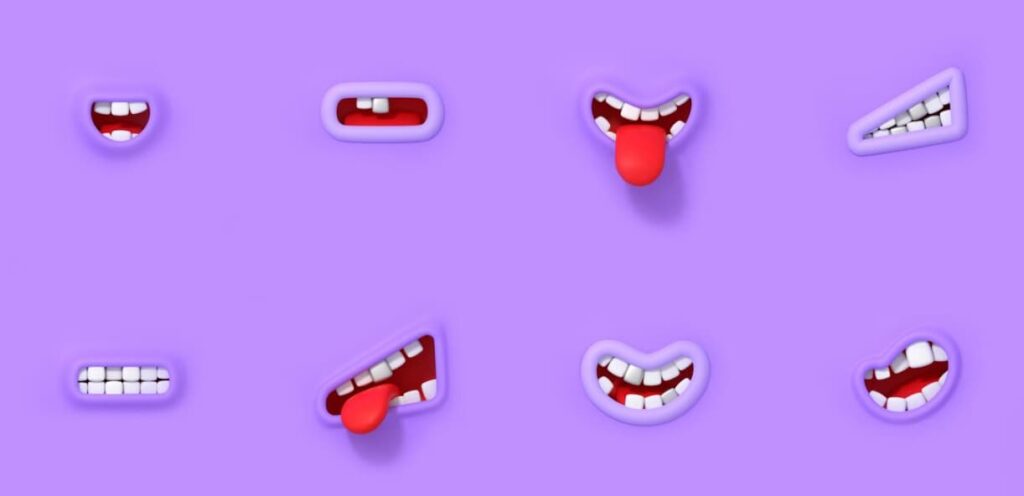This tutorial offers a step-by-step approach to drawing mouths and lips, introducing a variety of shapes and ways to render them in different styles. The focus is on a particular technique that simplifies the complexity of the mouth’s structure, making it accessible for artists at any skill level to create expressive lip illustrations. Through these instructions, one can learn how to incorporate these techniques into vibrant character designs.
The guide provides a clear pathway to understanding the anatomy of the mouth, showing how to sketch different expressions and forms with ease. It’s designed to help learners grasp the fundamentals of mouth and lip drawing and apply these skills to bring characters to life with color. Although multiple methods exist for mastering this aspect of drawing, the tutorial emphasizes an approach deemed straightforward, aiming to make the learning process as simple as possible.
Understanding Basic Structures
To grasp the fundamentals of drawing a mouth, it’s essential to start by examining its structure without focusing on the lips.
- Imagine the mouth as a section of a sphere;
- When open, it resembles half of this shape;
- This basic visualization exercise reveals that the mouth isn’t merely a straight line when closed or a crescent when open; rather, it possesses its own dimensional volume.
Essential Components of Mouth Drawing

Understanding that the mouth possesses both volume and depth is crucial for accurate depiction. It’s not just a surface; it’s a cavity housing vital elements like teeth, tongue, and gums. While you can delve into finer details such as the uvula, palate, various teeth, and tonsils, let’s concentrate on these fundamental features.
On the left, you’ll find a simplified representation of these key components, while on the right, a more intricate interpretation provides further insight into their structure.
Lip Drawing: Basic Structures
Lips, crucial muscles connecting to the mouth, merit a focused examination to comprehend their anatomy. Let’s isolate them from the mouth and explore their simplest representations.
Here, we’ll illustrate a step-by-step approach to drawing lips, utilizing rounded, curved, and elongated shapes, starting from a basic straight line without incorporating perspective. It’s important to note that the dimensions—thickness, width, and length—of the lips vary based on the character’s design.
If visualizing lips with rounded and curved structures proves challenging, beginning with flattened areas (akin to low poly modeling) can aid in understanding the distribution of volume within the lips.
Mouth Drawing: Exploring Fundamental Structures
When embarking on your mouth drawing journey, it’s essential to grasp the intricacies of its key elements, especially within the lips, to enhance understanding and design proficiency.
Delving into various crucial structures, including the distinctive Cupid’s bow, the junctions where the upper and lower lips meet (commissures), the philtrum (the area connecting the nose and upper lip), central tubercles located beneath the Cupid’s bow, and the distinct features of the upper and lower lips.
Experimenting with these components allows for the creation of diverse lip designs, enriching your artistic repertoire with versatility and creativity.
Diverse Mouth and Lip Forms
Exploring various mouth and lip shapes involves experimenting with a range of factors, such as altering the thickness of the upper or lower lips, defining the Cupid’s bow, adjusting the width of the mouth, and more. This iterative process allows artists to discover which variations best suit their characters.
- The size and shape of a character’s mouth often convey specific traits and personalities;
- A smaller mouth is typically associated with characters who are modest or reserved, while a larger mouth tends to indicate greater expressiveness;
- Additionally, thin lips are commonly attributed to masculine characters, whereas thicker lips are often associated with femininity, though exceptions always exist.
This nuanced approach to character design adds depth and dimension to artistic portrayals, offering endless possibilities for character expression and storytelling.
Lip and Mouth Variations within a Single Character
Understanding the versatility of mouth and lip shapes allows for experimentation with various styles on a single character, offering insight into which features best complement their overall design.
Drawing Emotions with Precision
Mastering facial expressions involves understanding the pivotal role of various elements, including the eyes, eyebrows, and particularly the mouth and lips, in conveying different emotions.
When depicting emotions, it’s crucial to pay attention to how specific areas of the mouth are altered. For instance, to portray joy, raise the corners of the mouth, while depicting sadness involves drawing them lower than usual. Similarly, anger can be expressed through an open mouth, possibly showing teeth and gums.
Moreover, the lips serve as powerful tools for transmitting a wide range of emotions, including challenge, fear, sensuality, and more. To effectively convey each emotion, consider the shape, curvature, and tension of the lips, along with other facial features.
Diverse Mouth and Lip Styles

Expanding your skillset in the art of drawing, mastering the fundamentals of mouth and lip anatomy is merely the first step. As you become more comfortable with the basics, the next phase involves delving into the rich diversity of mouth and lip styles.
- Experimenting with different styles enables you to understand the wide range of expressions and emotions that can be conveyed through the mouth and lips;
- From the subtle curvature of a smile to the bold lines of a pout, each variation offers a new avenue of artistic expression;
- Additionally, understanding the impact of light, shadow, and texture on these features can elevate your work from simple sketches to lifelike portraits;
- Incorporating styles from various cultures and historical periods can also enrich your artistic vocabulary, allowing you to create more inclusive and resonant works.
Conclusion
This comprehensive guide aimed to provide you with a solid foundation in cartoon mouth drawing, detailing the structure of a mouth, the significance of key elements, exploring lip variations, and expressing emotions. Armed with these skills, you’re well on your way to creating a rich array of diverse and vibrant characters.
